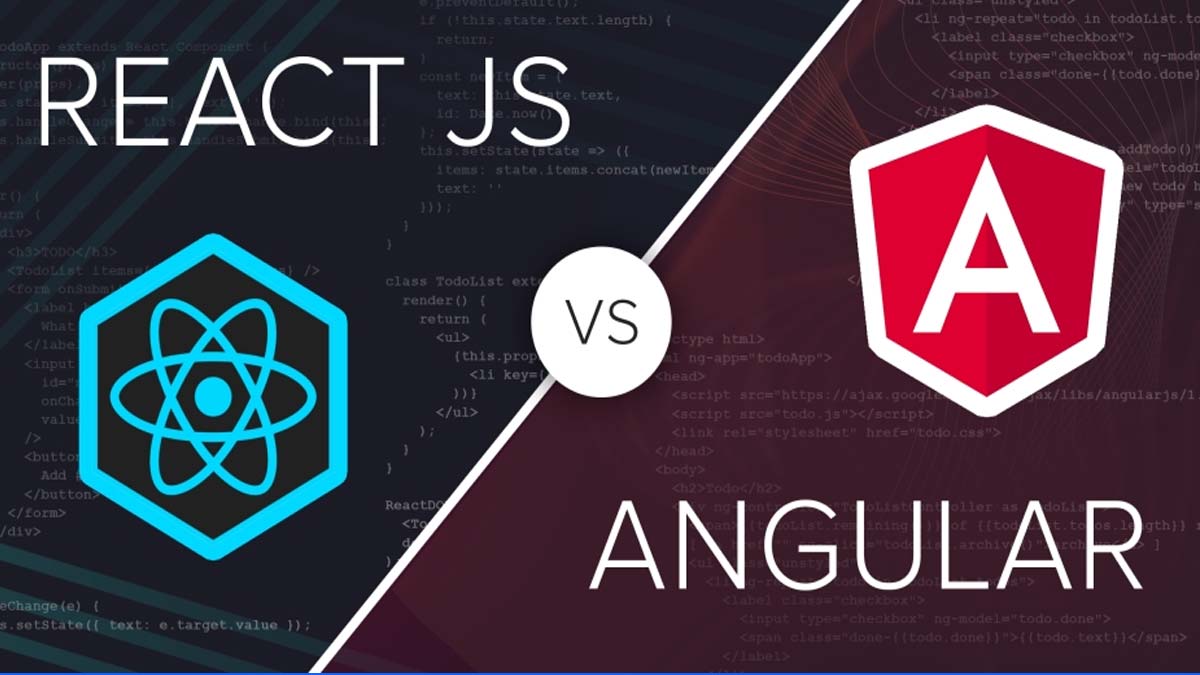
Here’s a detailed comparison of React and Angular, two of the most popular frontend technologies:
Basic Overview
| Feature | React | Angular |
|---|---|---|
| Type | Library for building UI | Full-fledged MVC framework |
| Developed by | ||
| Initial Release | 2013 | 2010 (AngularJS), 2016 (Angular 2+) |
| Language | JavaScript (JSX) | TypeScript |
Core Differences
| Category | React | Angular |
|---|---|---|
| Architecture | View library (requires additional libraries) | Full MVC framework |
| Data Binding | One-way data binding | Two-way data binding |
| DOM Handling | Virtual DOM | Real DOM with change detection |
| Learning Curve | Easier to learn, more flexible | Steeper due to complex features |
| Performance | Generally faster due to Virtual DOM | Slightly slower with complex two-way binding |
| Flexibility | Highly flexible, integrates with anything | More opinionated and structured |
| Component Model | Functional & class-based components | Class-based components using decorators |
| Dependency Injection | Manual (via third-party) | Built-in |
| Routing | Requires third-party (e.g., React Router) | Built-in (Angular Router) |
| State Management | External libraries (Redux, Zustand, etc.) | NgRx or built-in Services |
Use Cases
| Use Case | Better With… |
|---|---|
| Lightweight, dynamic UIs | React |
| Enterprise-scale apps with rules | Angular |
| Quick prototypes & flexibility | React |
| Built-in tools and structure | Angular |
Community & Ecosystem
-
React:
-
Larger ecosystem.
-
More flexible and diverse third-party tools.
-
Better suited for microfrontend architectures.
-
-
Angular:
-
Everything comes pre-packaged (routing, HTTP client, testing).
-
Ideal for developers who want convention over configuration.
-
Summary
| Choose React if: | Choose Angular if: |
|---|---|
| You want flexibility and a fast setup | You need a structured, scalable architecture |
| You prefer learning gradually | You want a complete solution out of the box |
| You’re building SPAs or lightweight apps | You’re building large, enterprise-grade apps |


